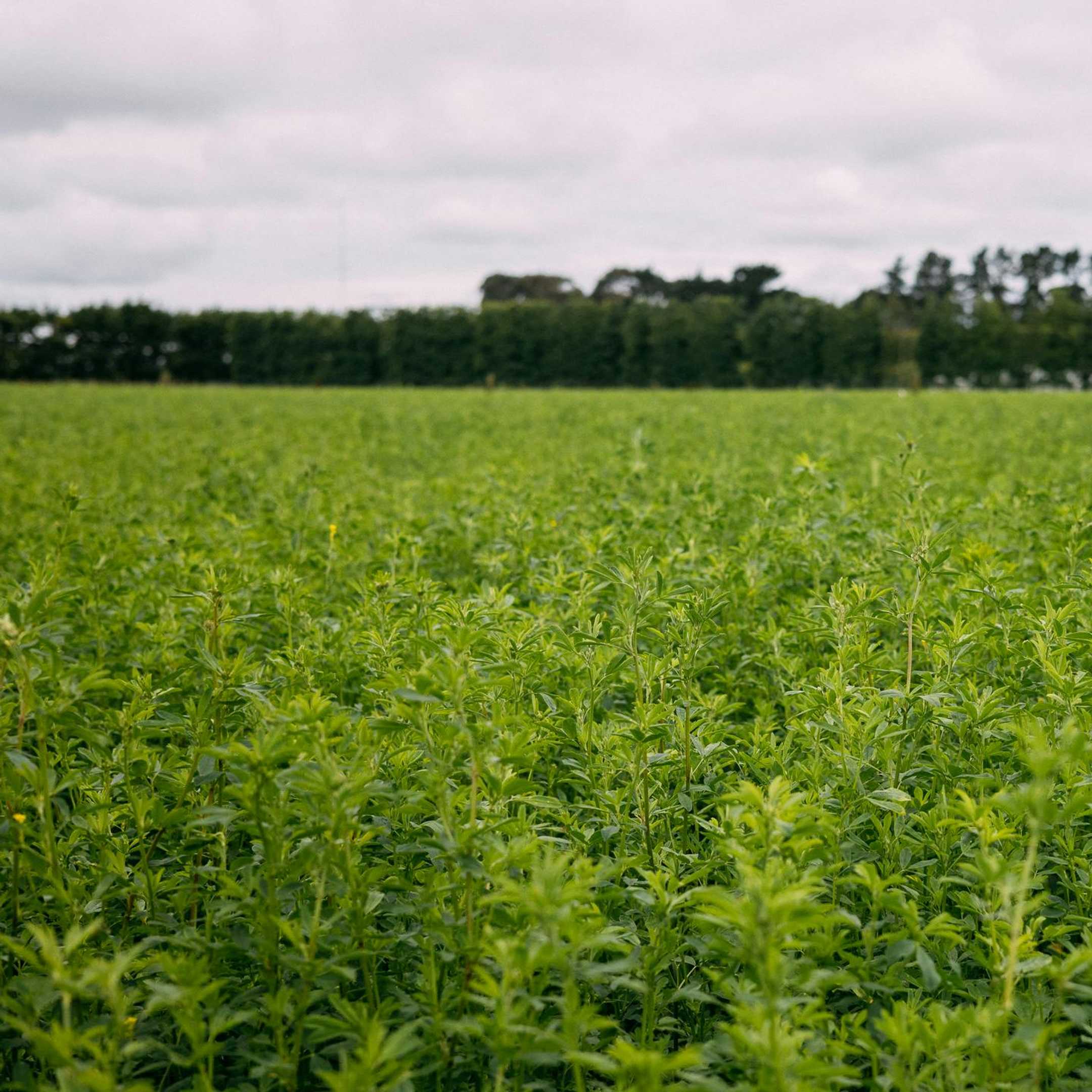Thinking Beyond Whey: The Best Protein Alternatives
Whey has been a popular form of protein for a long time. But, for a range of reasons, people who’ve been taking whey protein are starting to look for something else.
As an animal product, whey isn’t suitable for those on vegan or other meat-free diets. It’s also not considered a particularly environmentally friendly form of protein, especially when compared to plant-based protein options.
There are also common side effects, ranging from stomach pain, cramping, bloating, nausea and more. This could be due to an intolerance to the milk protein or other nutrients with the whey.
For all of these reasons and more, whey protein alternatives are becoming more and more common. Here, we’ll weigh up some of the pros and cons of alternative protein options.
Rubisco - The Green Powerhouse
Rubisco protein is a relatively new kid on the block, but it has the potential to transform the protein landscape. It is the most abundant source of protein in the world, but, until recently, it’s been largely inaccessible to humans.
Rubisco is the plant protein from leafy greens that’s responsible for photosynthesis. In fact, it’s in every leaf in the world. It’s a highly nutritious, complete protein that sustains animals like cows and buffalo almost entirely on its own.
It has a unique nutritional profile, including an extremely high amino acid content that’s similar to beef. It’s low fat and hypoallergenic, which means it’s a natural fit for those on meat-free or other diets.
Whatever your reason for taking protein - whether it’s to lose weight, gain muscle, experience other health benefits or just improve general fitness, rubisco protein is highly effective.
The environmental benefits of rubisco protein are considerable. Because it occurs naturally in all leafy plants, we can utilize highly sustainable plants and crops to grow it. In Leaft Foods’ case, we use alfalfa (aka lucerne), a nutrient-dense crop that’s nitrogen-fixing and ultimately ends up improving soil health when it’s harvested and decomposes.
Rubisco is commonly used by farmers as a livestock crop, helping to lower their overall emissions and promote diverse soil use. It requires much less water than other crops and minimizes other effects on the land. This makes it ideal for farmers wanting to diversify their operations.
Our modeling suggests whey, as a conventional dairy protein product, has a carbon footprint that’s 17 times higher per hectare than rubisco.
Rubisco is also highly versatile. It’s neutral tasting and water soluble, so you can add it to protein snacks, smoothies, and almost any other food you want with hardly any noticeable effect. It doesn’t have the grittiness or heaviness of others.
In fact, rubisco is highly digestible. Leaft Foods’ extraction technology keeps the nutritional goodness of rubisco intact, and allows humans to absorb it all extremely efficiently.
For all of these reasons, rubisco has incredible potential, not only as a whey protein alternative, but as one of the most powerful new plant proteins on the market right now.
Pea Protein - A Plant-Based Powerhouse
Pea protein is an established, widely available alternative to whey protein. There’s still debate on whether it’s a complete protein or not - it often depends on who you ask.
The debate comes in because it is lower in some aminos compared to other proteins. However, pea protein does have all nine essential amino acids and a high protein content.
Plant-based protein from peas is typically extracted from split peas. Peas are one of the world’s most abundant crops, so pea protein is considered more sustainable to produce than whey.
It’s suitable for all diets and has a good protein content. However, like many other plant proteins, a significant proportion of its nutritional content is often not absorbed by the body when it’s consumed. This means that aspects of its nutritional profile can be somewhat overstated, as it passes through the body without being fully utilized.
Pea protein generally has a poor taste and solubility, which is due to the way the protein is extracted through acid precipitation that separates the carbohydrates in the pea from the protein.
It’s a versatile form of protein that is often used as protein powder, in bars or other foods. Pea protein is also good for those with allergies, particularly to proteins like whey or soy.
Although peas are a legume, there is a certain amount of waste involved in growing and harvesting pea protein, with the shells and chaff being discarded in the process.
Hemp Protein - The Nutrient-Rich Alternative
Hemp protein is a relative newcomer in the protein game, but it’s proving to be highly effective.
It contains all nine essential amino acids, and it has the ideal balance of omega-6 to omega-3. Its 3:1 ratio reduces the risk of high blood pressure, heart disease and some cancers, among other things. For context, most Western diets typically have a ratio of around 16:1.
Hemp is also high in fiber, and has the three branched chain amino acids (BCAA’s) that are particularly effective at building and repairing muscle. Apart from rubisco, none of the other whey protein alternatives discussed here have all three BCAA’s.
Hemp is a nutrient dense plant, and while it can have a lower proportion of protein compared to others, it’s highly digestible. You can actually end up consuming more protein from hemp than other forms that have higher protein content.
The hemp plant is also very sustainable to grow. It requires very little watering, cultivation doesn’t damage the ecosystem and there’s minimal waste because parts of the plant that aren’t used for protein can be used for other industrial uses, such as in skincare products, clothing, food, bioplastics and textiles.
There’s also minimal processing involved in producing hemp protein, so it comes in a more natural form.
Hemp does have a characteristic taste, which is an earthy, nutty flavor. It’s more difficult to mask than some other proteins, although this isn’t an issue if it’s something you like.
Again, this is a fairly versatile protein. Hemp is commonly used in smoothies, in baking and with plant-based protein supplements.
Soy Protein - A Classic Plant Protein
Soy protein is another plant-based form of protein that’s been on the market for quite a while. It’s fairly well known and widely available, which means it’s been widely studied and much is known about it.
Soy protein is harvested from soybeans, commonly in the form of a protein powder. People on meat-free diets commonly get a significant amount of their plant-based protein from soybeans; it’s eaten in a variety of forms, including in tofu, soy milk, tempeh and in meat imitation products. The versatility of soy as a source of protein is considerable.
It pays to be aware that these different forms all require various levels of processing, which can affect the nutritional makeup of the final product. Even different forms of soy milk have a varying protein profile because of the different methods that can be used to produce it.
Soy protein helps to lower inflammation, build muscle, lose weight, reduce the risk of heart disease among other things. In particular, soy protein helps to promote bone health.
Soy contains all nine essential amino acids, usually in high quantities. Ultimately, the popularity of soy products speaks to its effectiveness as a plant protein.
While a portion of consumers have hesitations about genetic modification and monocropping, many soy farmers have taken steps to improve the sustainability of their operations in the last few years. In previous decades, soy monocropping was common and sustainability practices weren’t often used. Now, crop rotation, water and nutrient management and modern farm practices help to make soy protein production much more environmentally friendly.
Conclusion
There are more options now for people looking to consume protein than ever before. While whey may be one of the first types of protein you think of, there are often many advantages to other alternatives.
In particular, plant-based alternatives can be not only more nutritious, but are grown, harvested and provided in a much more environmentally sustainable way.
At Leaft Foods, our commitment to making food production more sustainable has led us to unlocking the potential of rubisco protein. Our groundbreaking extraction technology means we can produce one of the world’s most sustainable, effective plant-based proteins.
To find out more about rubisco protein or Leaft Foods, see our website.



